AT Professional system installed in St Mary's Church - Warwick

St Marys Church Warwick was in need of a sound system that worked. Sandstone churches with high ceilings typically provide a good acoustic environment for a pipe organ recital but render speech unintelligible. St Mary’s is no exception.
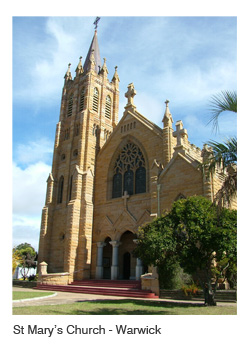
This is a regular Catholic Church in regional Australia with a modest budget. They have a small group of dedicated musicians and singers and a congregation who like to hear the spoken word – and a glorious heritage listed church.The consultant was faced with a challenging set of requirements:-
-
Good intelligibility in a space with ~3.2 seconds reverberation time.
- Appearance that didn’t dominate the visual impact of the church itself
- Able to be installed so that it could be removed without leaving any trace – a rule in heritage listed buildings
- Simple operation – there is no resident sound engineer
- High levels of gain before feedback
- Budget constraints rule out electronic beam steered arrays
Patrick started with an Ease model of the building – constructed on site with a laser measure. The model acoustics were tested and compared to the real building's acoustics and found to be an excellent replica.
The wire frame of the model is shown below:

The ALA32 FS was built by ATProfessional using the ALA fundamental components laid out in a 4.0m tall array to Patrick’s specs. It suited the application brilliantly. It stands on the concrete floor and attaches to the top of the columns where holes are drilled well away from the gaze of any observer. The picture below shows how it fitted into the model.
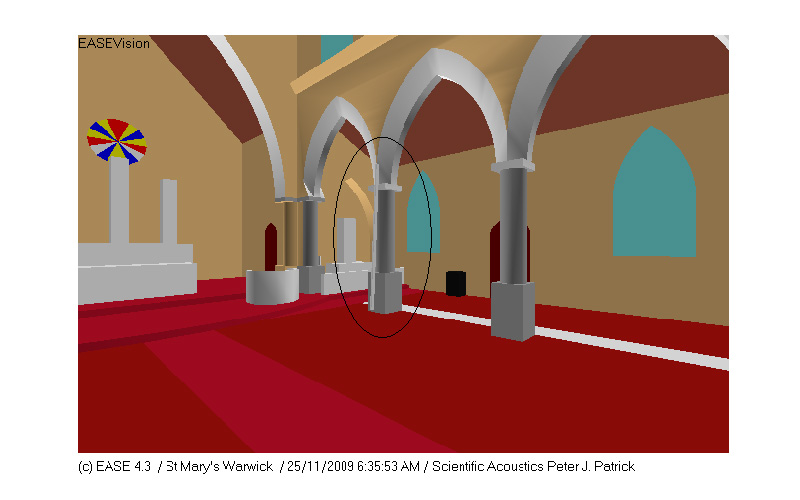
Two standard ALA 4’s were required to cover the area beside the pulpit and lectern at the front of the church and an ALA01T was provided as a monitor in the Sanctuary.
A 16 in – 16 out DSP system was required to provide the necessary processing power and simple control panel to drive the system. Patrick chose an EV “Netmax” system because it offered a chance to test the new SysTune analyser system with it’s “Plug In” feature. The Plug In allows the user to pull the DSP screen directly into SysTune and adjust the DSP EQ, Time alignment, whatever, while observing the outcome in SysTune.
A photo from the system tuning process is shown below – the top of the screen is the frequency response in SysTune and the bottom is the control panel of the EQ block imported from NETMax as a “Plug-In”
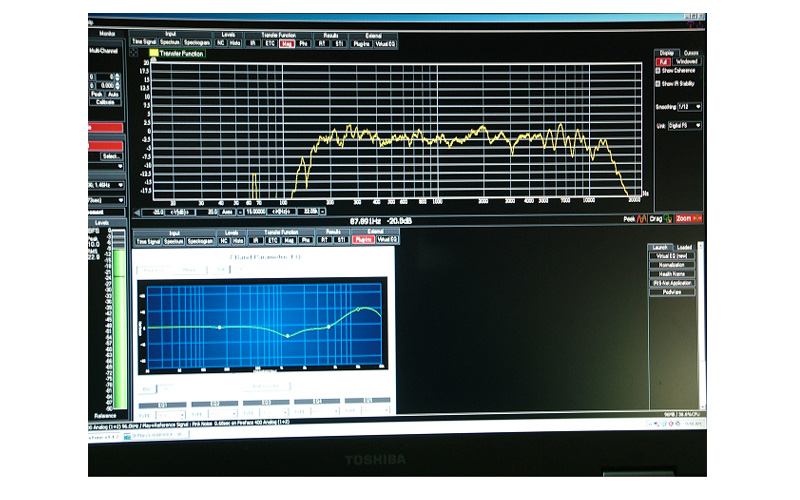
The modelling process included a test run after all loudspeakers were carefully aimed and coverage checked. EASE 4.3 includes a powerful simulation package called AURA. The AURA routine uses a hybrid ray trace system to evaluate the acoustic outcome at locations selected by the user. The loudspeaker data supplied by the manufacturer controls the dispersion of sound in the same way the real loudspeaker does. The most distant, and potentially worst seat in the nave was placed in the model approximately 20 m from the pulpit and 16 m from the loudspeaker arrays. The Impulse response derived by AURA was exported from EASE as a *.wav file and analysed in the EASERA analysis package. The intelligibility calc from EASERA is shown below. It shows that an STIPa reading of 0.63 to 0.64 can be expected at this location.

 Once the installation was completed the system was tested with an NTI Talk box standing in the pulpit “talking” to the pulpit microphone and an NTI AL1 Acoustilyser running the STIPa optional software. The results are shown in the next picture. The STIPa reading in brackets was recorded with the Acoustilyser with the talk box unassisted by the PA system. That is – the PA system was turned off. The location where the AURA test was done in Ease is circled.
Once the installation was completed the system was tested with an NTI Talk box standing in the pulpit “talking” to the pulpit microphone and an NTI AL1 Acoustilyser running the STIPa optional software. The results are shown in the next picture. The STIPa reading in brackets was recorded with the Acoustilyser with the talk box unassisted by the PA system. That is – the PA system was turned off. The location where the AURA test was done in Ease is circled.
Observers noted during commissioning that the consultants voice was loud enough but unintelligible at this location without the PA system and that it was clear and intelligible when the PA system was turned on. The numbers produced by the NTI Talk Box and Acoustilyser back the subjective assessment, which, given the price tag of the NTI system, is reassuring.
It’s worth noting that there are no knobs, buttons or adjustments of any kind on the Acoustilyser or talk box that can be used to monkey with the readings. It can’t be tricked by mis-operation.
The results verified the design almost perfectly.
The gain before feedback issue was solved using a few tricks:- A Bosch feedback suppressor which incorporates a frequency shifter and can not change the frequency response was used in the path of the speech only microphones in the sanctuary, minimal fold-back was arranged through the DSP from musicians microphones to musicians loudspeaker and a pressure sensitive mat was installed under the carpet behind the altar.
Gates in the DSP proved worthless because the 3+ s reverberation time means the sound pressure from speech is the same volume throughout the entire church. A hand clap near the font opens every microphone in the building – no combination of settings of gate sensitivity produced any worthwhile improvement that would still open the gate for a softly spoken talker. Switches on microphones and pressure sensitive mats under the carpet provided the only reliable means to minimise the number of open microphones.
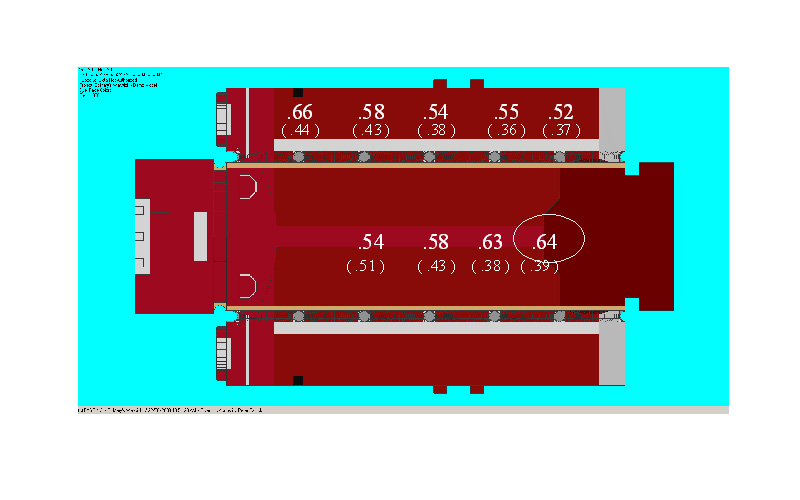
A plan of the church showing readings taken with an NTI talk box at the pulpit and a roving Acoustilyser.
The readings in brackets were taken with the sound system OFF. The bold print is the reading with sound system on. The circled one is the location where the simulation was run.
The ALA 32FS columns steer the direct sound over the altar where a boundary mic is placed. The mat opens the mic when a talker stands on it and delivers a healthy volume in the nave for normal speech levels from a talker who’s mouth is a good metre away from the microphone.
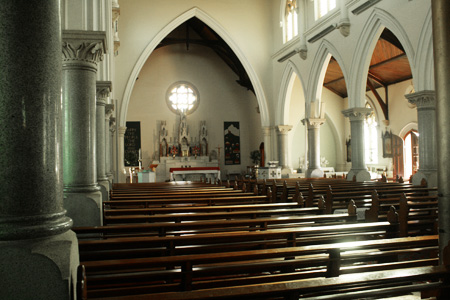 The most critical users were happy with the final result – “The visiting priest used the headset and was beautiful and clear no matter where he stood”
The most critical users were happy with the final result – “The visiting priest used the headset and was beautiful and clear no matter where he stood”
Written by Peter Patrick - Scientific Acoustics
www.scientific-acoustics.com.au